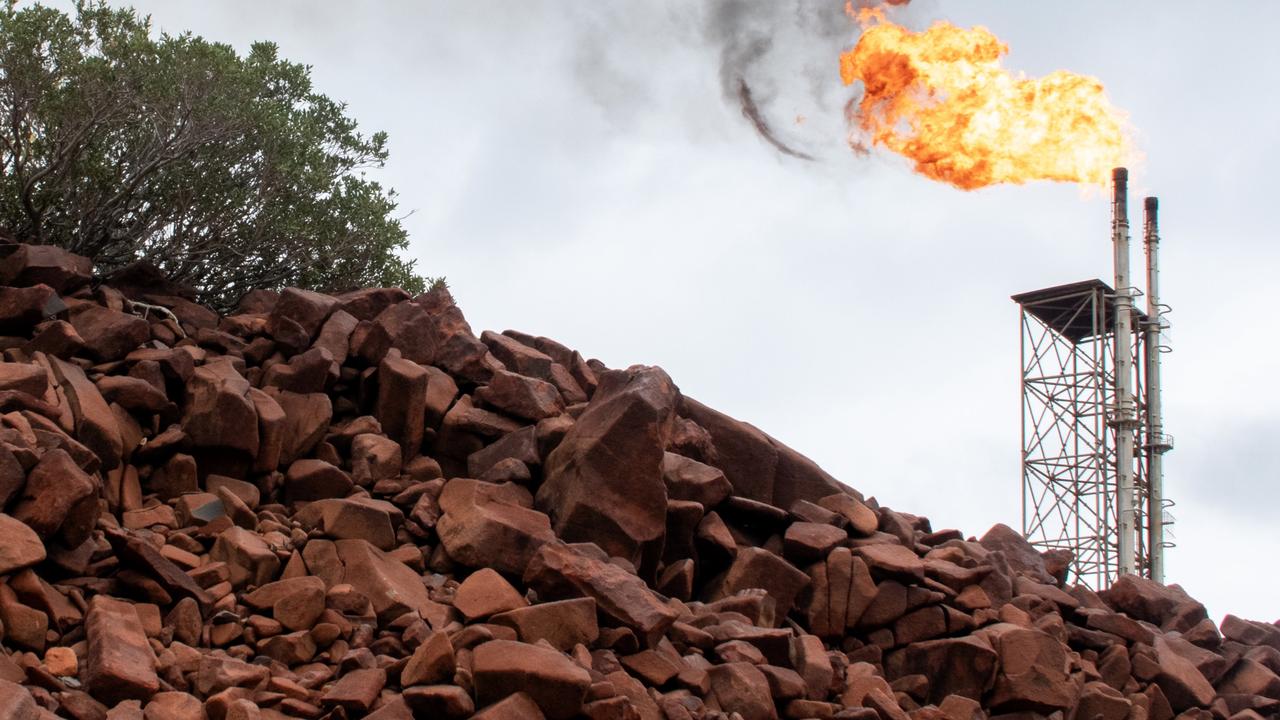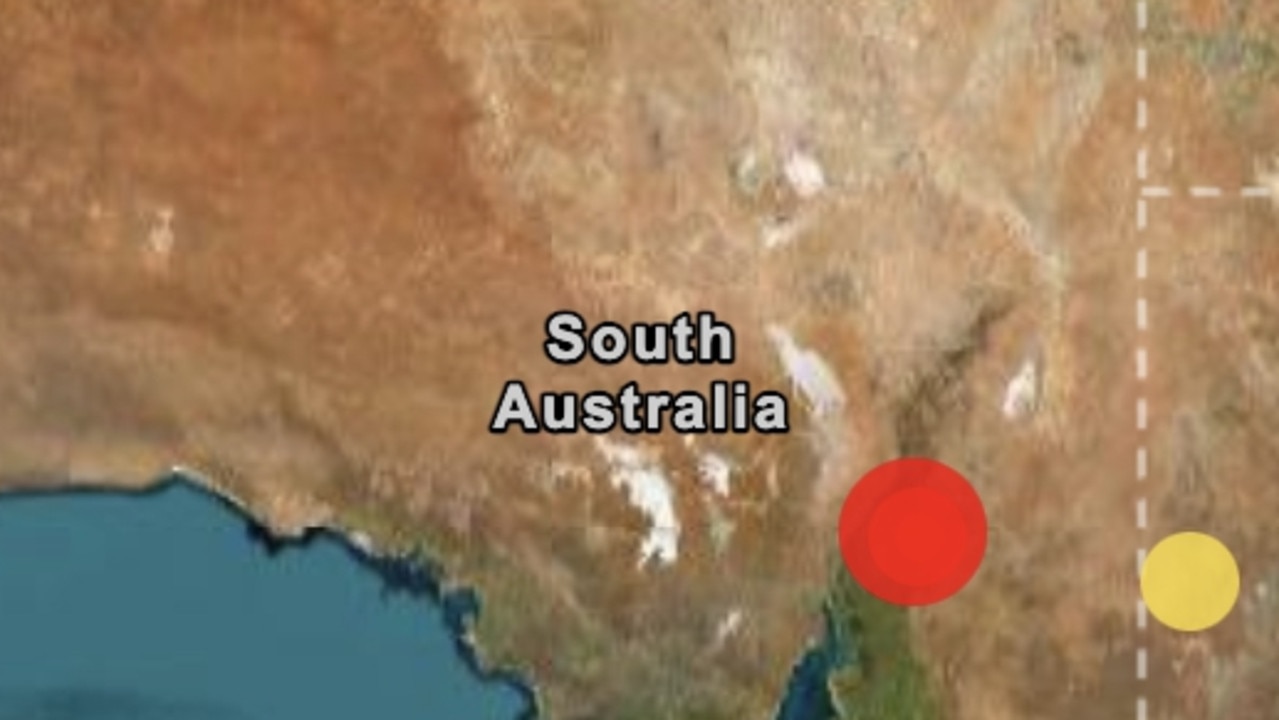Victoria Falls slows to trickle, dam drying up as drought hits southern Africa
One of the world’s most dramatic tourist attractions is unrecognisable as severe drought reduces water flow for the mighty Victoria Falls to a trickle. It’s a symptom of a bigger issue.
Severe drought in southern Africa has reduced one of the continent’s biggest tourist attractions - the mighty Victoria Falls - to a trickle and reduced water levels in the world’s largest reservoir to perilously low levels.
Usually the cliffs which the Zambezi River tumbles over on the border of Zambia and Zimbabwe are hidden behind a wall of water and a continual spray of mist.
No longer.
Water levels at the UNESCO-listed natural wonder, which attracts thousands of tourists each year, are at their lowest since 1996.
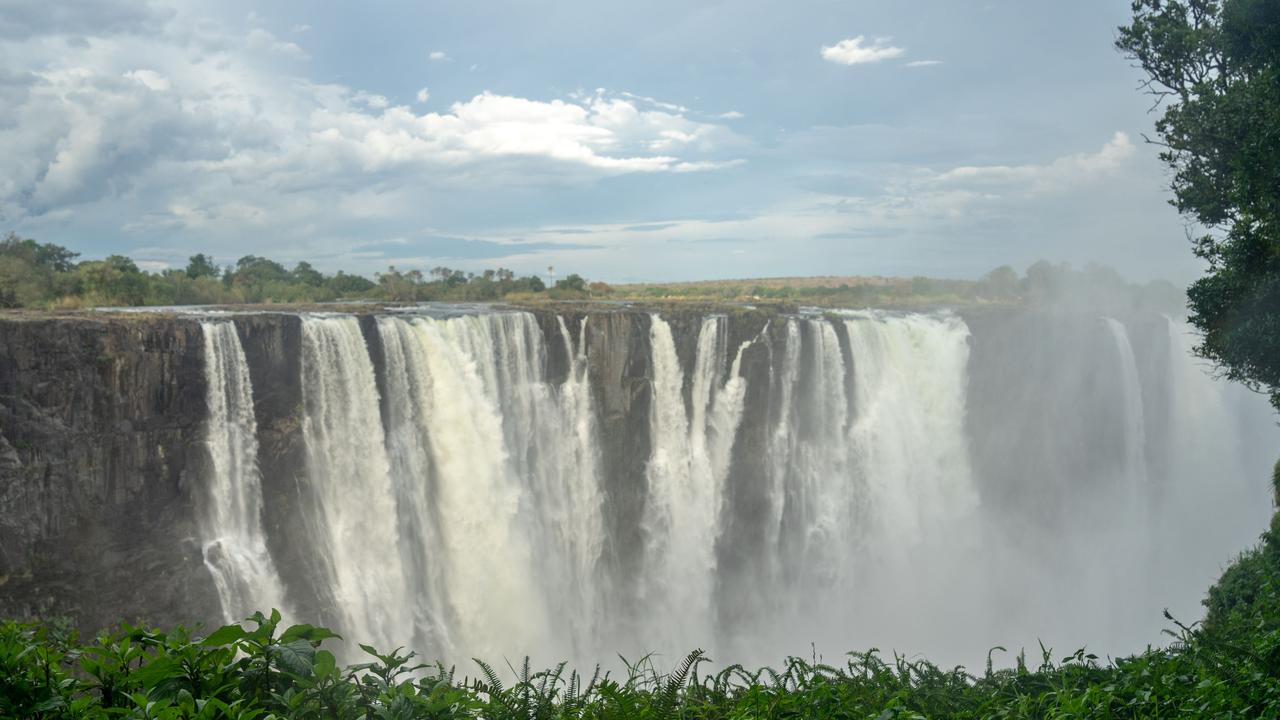
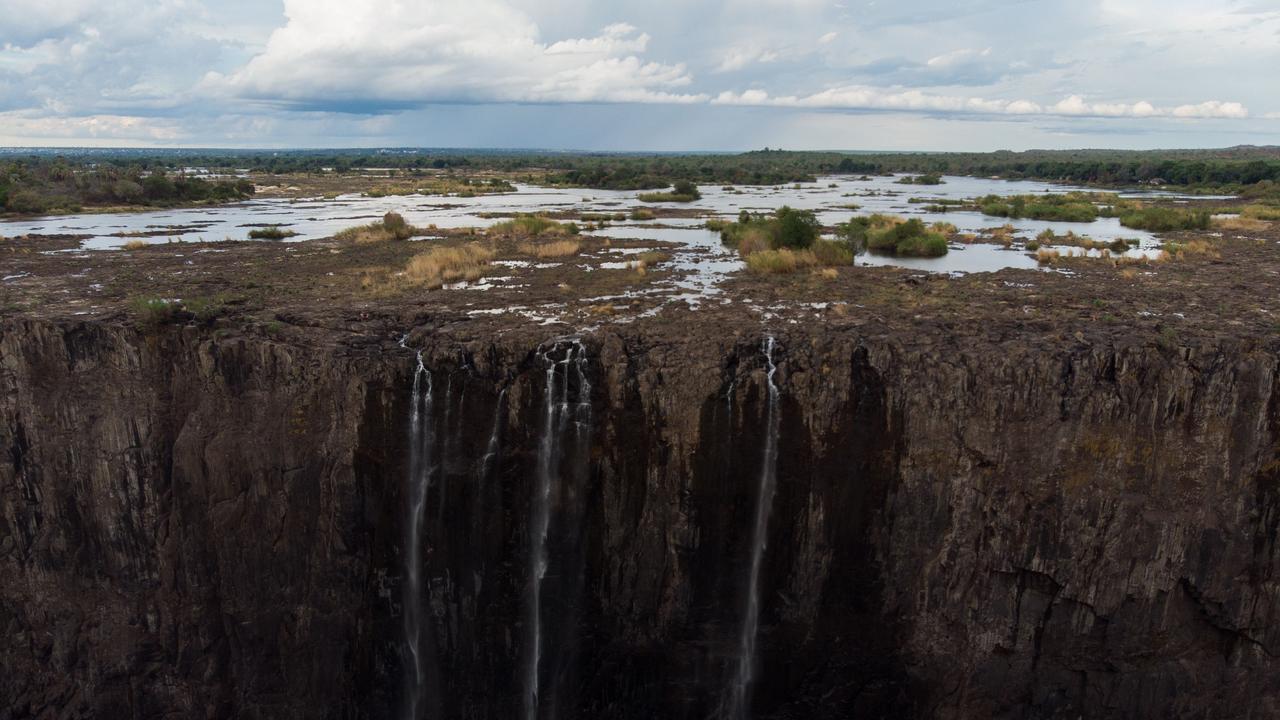
Tourism operators and authorities are now pinning their hopes on the wet season delivering much-needed rains to help feed the “smoke that thunders” as the falls are referred to in the local language.
But Elisha Moyo, a climate change researcher at Zimbabwe’s Ministry of Environment, Climate and Tourism, has sounded an ominous warning.
He told the BBC that the average flow over the falls in 2019 is down by almost half and the low levels are becoming more frequent.
“Who knows maybe one year there will be no falls completely, no water,” he said.
Southern Africa is grappling with one of its worst droughts in decades, and Zambia’s President Edgar Lungu is among those who have linked the situation at the waterfall to climate change.
“These pictures of the Victoria Falls are a stark reminder of what climate change is doing to our environment and our livelihood,” he tweeted in October.
These pictures of the Victoris Falls are a stark reminder of what climate change is doing to our environment and our livelihood.
— Edgar Chagwa Lungu (@EdgarCLungu) October 1, 2019
It is with no doubt that developing countries like #Zambia are the most impacted by climate change and the least able to afford its consequences. pic.twitter.com/a6X0V2TrEQ
But more worrying for the two nations is the situation downstream at the Kariba Dam reservoir, the largest reservoir in the world.
Kariba Lake, created when the Zambezi was dammed in 1959, has plunged to its lowest level since 1996, raising further risks to the hydropower plants that Zimbabwe and Zambia depend on for nearly half of their power.
Water levels at the world’s largest man-made freshwater reservoir that straddles the two countries, fell to 10 per cent of usable storage, according to data posted on the Zambezi River Authority’s website. That’s the least since 1996 and worse than the 11 per cent recorded during a drought three years ago.
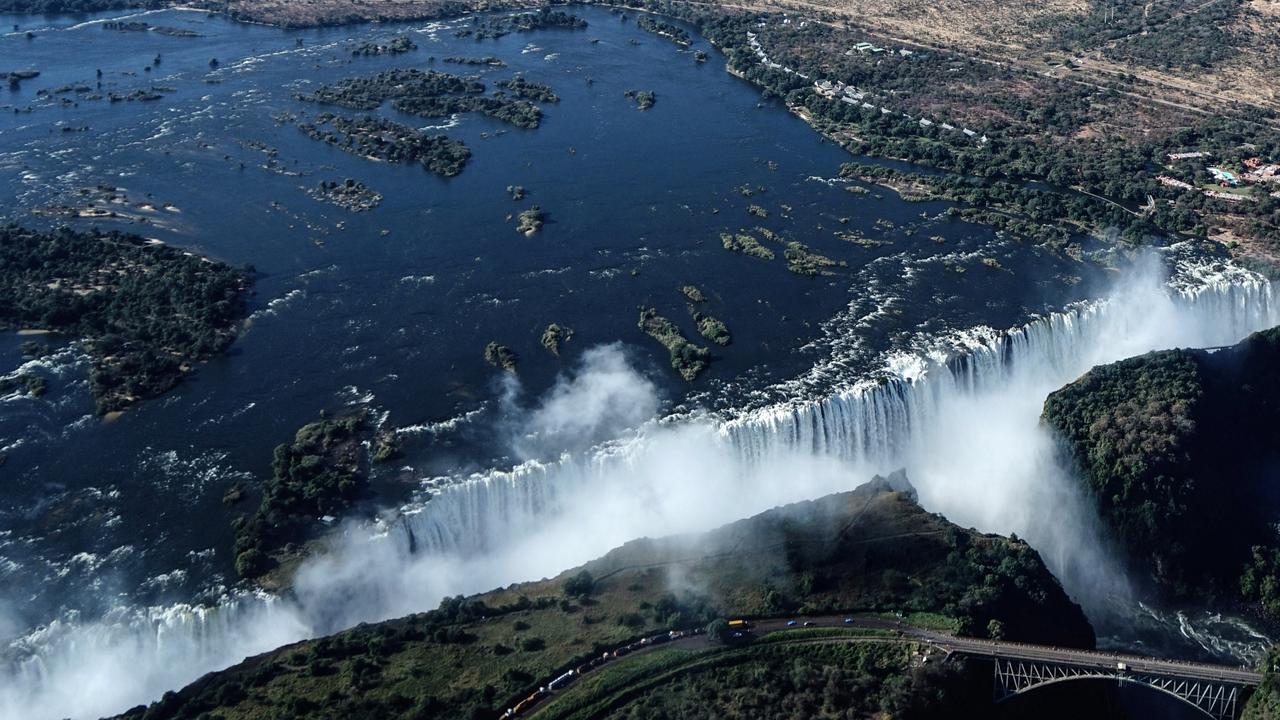

Both nations are experiencing the worst drought in at least four decades, forcing the nations to cut generation from Kariba after water flows fell sharply.
Each country has implemented power cuts lasting as long as 18 hours a day
Seasonal rains, which usually fall from October through April aren’t off to a good start, even as the volume of water tumbling over Victoria Falls rose to 252 cubic meters per second in the second week of December. While that’s more than double the lows reached in November, it’s only slightly better than 234 cubic meters measured this time last year, which ended up being one of the worst seasons on record.
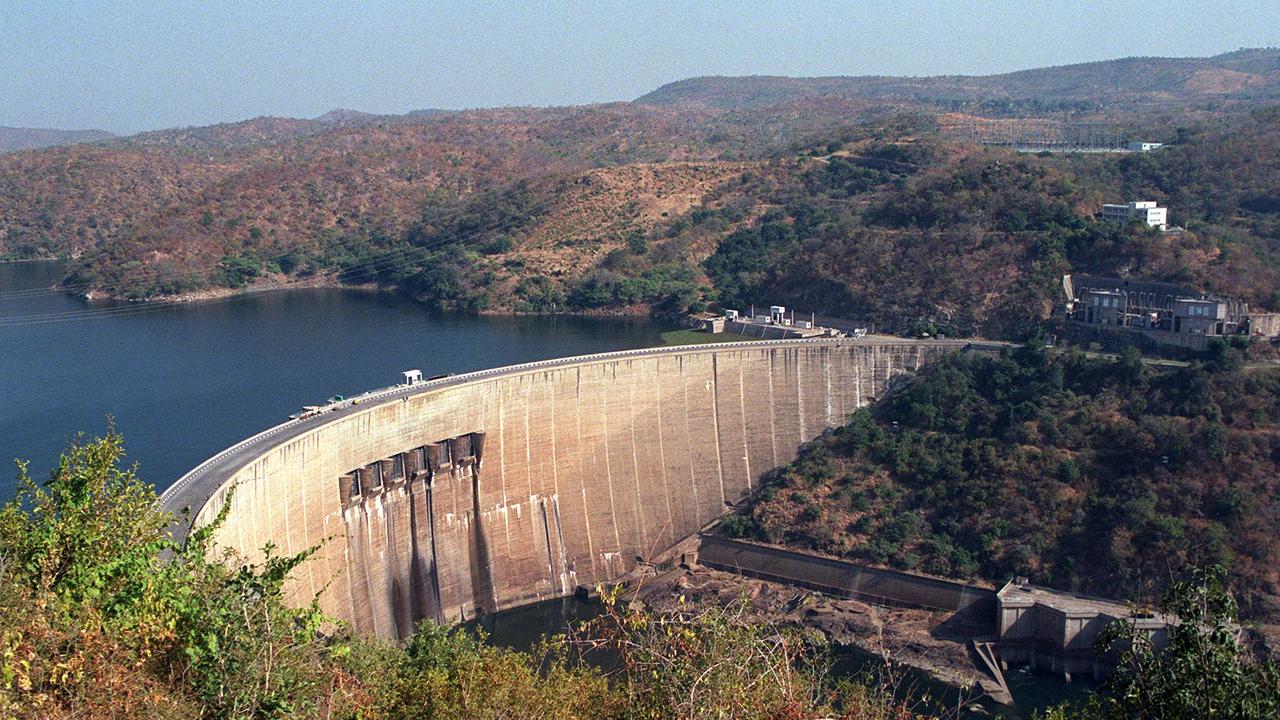
There are even more worrying signs. The drought in Zambia is forcing millions to turn to wild fruits, roots and poisonous plants to survive hunger.
An estimated 2.3 million people in Zambia are on the brink of starvation, threatened by a severe drought caused by dwindling rainfall, which President Lungu has explicitly linked to climate change, though some scientists add that we should be cautious to make this connection.
The long-term impact of climate change on the Victoria Falls remains unclear.
A South African study published last year, which looked at 40 years of data from the Zambia Meteorological Department, noted that there had been “a statistical significant change in temperature” in Livingstone, the nearest big town to the falls.
However, there had been “no statistically significant change in annual average rainfall” in the town.
Kaitano Dube, a researcher at Vaal University of Technology who co-authored the study, told AFP it was difficult to know if, or when, the falls would dry up.
But he added: “If you look at the trends, definitely the water levels are getting lower and lower and the droughts are getting more extreme.”
The crisis comes after Cape Town came within weeks of running out of water completely.
The South African city of four million avoided “day zero” when despearately-needed rain fell, helping replenish its resevoirs.


